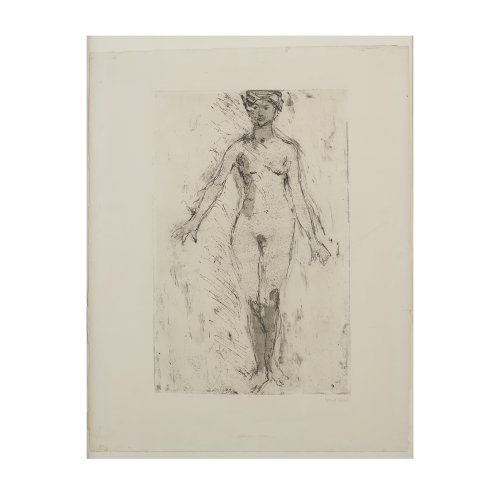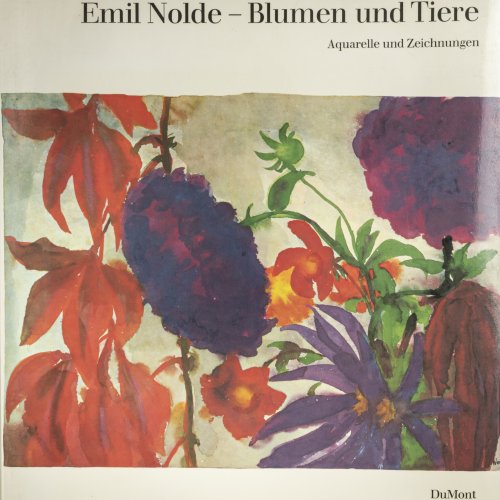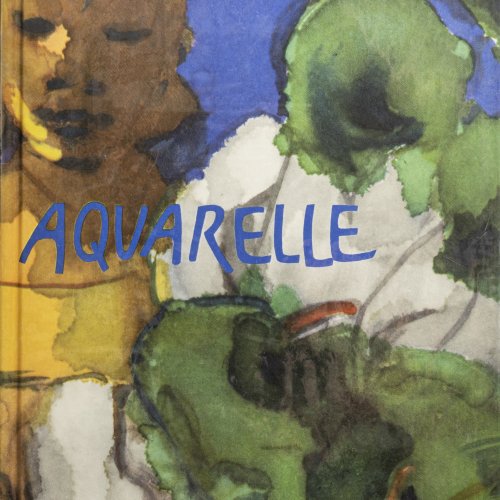Biography
With his colorful paintings and especially his intense watercolors, Emil Nolde is one of the leading Expressionist painters. At the same time, he is also controversial because of his role and views during the Third Reich.
He was born Hans Emil Hansen in 1867 into a family of farmers in the north of Schleswig Holstein in Nolde/Germany. His youth was marked by the meager and laborious life on his parents' farm. In 1884, at the age of 16, he began training as a carver and draftsman at the School of Arts and Crafts in Flensburg. During this time he was involved in the restoration of the Brüggemann altar in St. Peter's Cathedral in Schleswig. From 1888, after ending his training without a degree, he worked for various furniture factories, for example in Munich, Karlsruhe and Berlin. From 1892 to 1898 he was employed as a teacher for industrial and ornamental design drawing at the Gewerbemuseum in St. Gallen/Switzerland.
Later, Nolde initially moved to Munich. However, having been rejected from the art academy, he attended Adolf Hölzel's painting school in Dachau for a short time, before resuming his studies at the private art academy 'Académie Julian' in Paris via Amsterdam. In 1900, he moved into a studio in Copenhagen. With his first wife Ada, whom he married in 1902, he would spend the summer months on Allen Island until 1916, making use of a studio right on the beach. From 1904, the couple spent the winter months mostly in Berlin, where Nolde kept his apartment even after 1941, when his painting activities were officially restricted. The house was destroyed by bombs in 1944, as was the extensive collection of prints stored in the apartment.
In 1902, he adopted his birthplace as his surname. Through his color-intensive paintings with flower and garden motifs, which he showed at various exhibitions, he came into contact with the artists' group "Die Brücke", which he joined in 1906. However, after a dispute that took place already in the following year, he resigned as a member, but remained associated with the group. It was Nolde who introduced etching as a new technique, thus establishing annual gifts to provide financing and made contact with the collector and art patron Gustav Schiefler from Hamburg.
He became a member of the 'Berlin Secession’ in 1909. When the paintings of several artists, including Nolde and Pechstein, were rejected by the jury under Max Liebermann, they founded the New Secession, which organized several exhibitions between 1910 and 1914.
From 1910, paintings with religious motifs were created and his first solo exhibitions were a great success. From the end of 1913 to August 1914, Nolde participated in a New Guinea expedition organized by the ‚Reichskolonialamt‘ (imperial colonial office) as an illustrator. During this time, Nolde was intrigued by exotic cultures and was considered an open-minded and cosmopolitan artist.
In 1926 Nolde acquired a plot of land in North Frisia, on which he built a residential and studio house he named 'Seebüll'. After his death, the "Nolde Foundation Seebüll" was opened here as a museum for his works.
Nolde's position in the Third Reich was ambivalent. On the one hand, his works were seen as "degenerate art" and he was excluded from the Reich Chamber of Fine Arts and banned from exhibiting. On the other hand, he had a positive attitude towards the National Socialist ideology and stylized himself as a victim of cultural politics after World War II, even though he did not suffer any reprisals and continued to sell his paintings well. Between 1946 and 1951 he created over 100 paintings, even though he was already in poor health. He died in 1956 and was buried next to his first wife in their crypt in Seebüll.
In addition to his impressive portraits, Nolde is best known for his intense depiction of landscape motifs and floral still lifes, in which he brings the full expressionist force of color to fruition.
If you would like to sell works by Emil Nolde in one of our auctions, please feel free to contact our expert Laura Hille at l.hille@quittenbaum.de.



